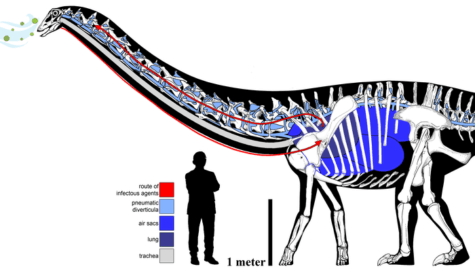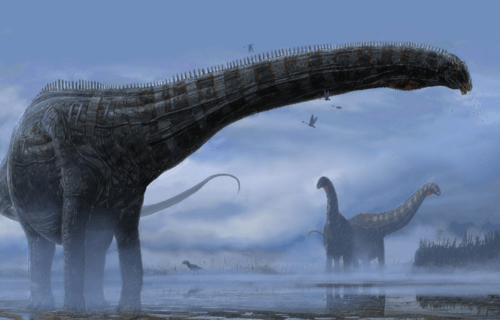POMONA, Calif. — Dinosaurs often have a reputation for being larger-than-life and seemingly unstoppable monsters. A new study, however, shows these incredible creatures were just as susceptible to illness as any other living being. According to the research, even your average Brontosaurus wasn’t immune to the occasional sauro-throat!
After analyzing the remains of an immature diplodocid — a large, long-necked herbivorous sauropod dinosaur (like the Brontosaurus) — scientists believe they’ve found the first piece of evidence revealing a unique respiratory infection in a dinosaur. This discovery represents a major step forward in humanity’s understanding of illnesses that affected the dinosaurs.
A team discovered the remains, nicknamed “Dolly,” in southwest Montana. They date back roughly 150 million years, to the late Jurassic Period of the Mesozoic Era. Researchers took a very close look at three of Dolly’s cervical vertebrae (neck bones), consequently finding never-before-seen abnormal bony protrusions showing a highly unusual texture and shape.
More specifically, the protrusions sit within bone areas that would have been penetrated by air-filled sacs. Those air sacs almost certainly linked up with Dolly’s lungs, forming just one part of Dolly’s overall respiratory system. Additional CT imaging on the protrusions revealed they were likely composed of abnormal bone. Researchers theorize those abnormal bones formed due to infection.
“Given the likely symptoms this animal suffered from, holding these infected bones in your hands, you can’t help but feel sorry for ‘Dolly.’” says Cary Woodruff, PhD, of the Great Plains Dinosaur Museum in a university release.
“We’ve all experienced these same symptoms – coughing, trouble breathing, a fever, etc. – and here’s a 150-million-year-old dinosaur that likely felt as miserable as we all do when we’re sick.”
What could cause a respiratory infection in a dinosaur?
The research team speculates the pre-historic culprit may have been a fungal infection similar to aspergillosis, a respiratory illness quite common in birds and reptiles today that can produce bone infections.
Beyond just contributing to modern science’s understanding of illness in dinosaurs, this work also helps form a clearer anatomical picture of sauropod dinosaurs’ respiratory systems in general.

“This fossil infection in ‘Dolly’ not only helps us trace the evolutionary history of respiratory-related diseases back in time,” Woodruff adds, “but gives us a better understanding of what kinds of diseases dinosaurs were susceptible to.”
If you’re wondering about the symptoms Dolly probably endured, study authors speculate the dinosaur likely experienced flu-like symptoms such as weight loss, fever, coughing, and breathing issues in the event of an aspergillosis-like respiratory infection. Aspergillosis can be fatal to birds if left untreated, so it’s possible this infection ultimately led to Dolly’s death. On a happier note, all these years later, Dolly is lending a serious helping fossilized hand to dinosaur science and research.
The findings appear in the journal Scientific Reports.
